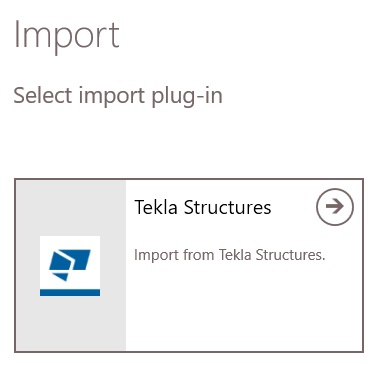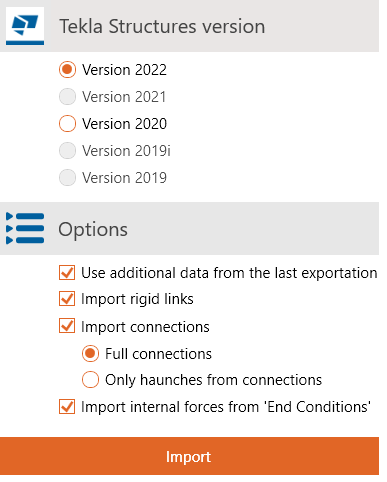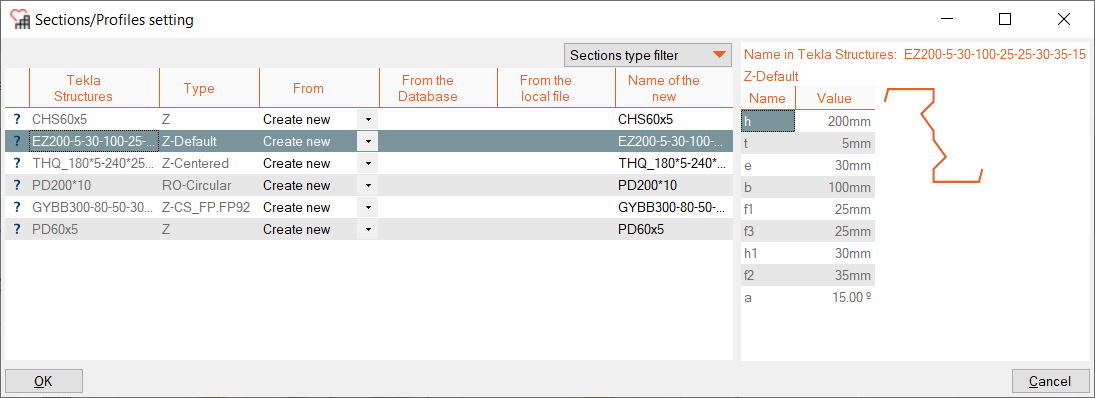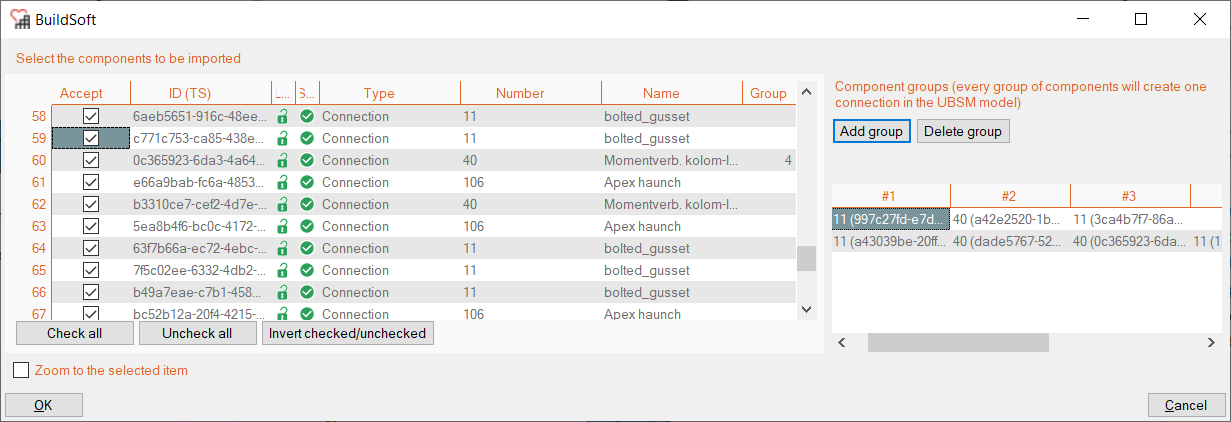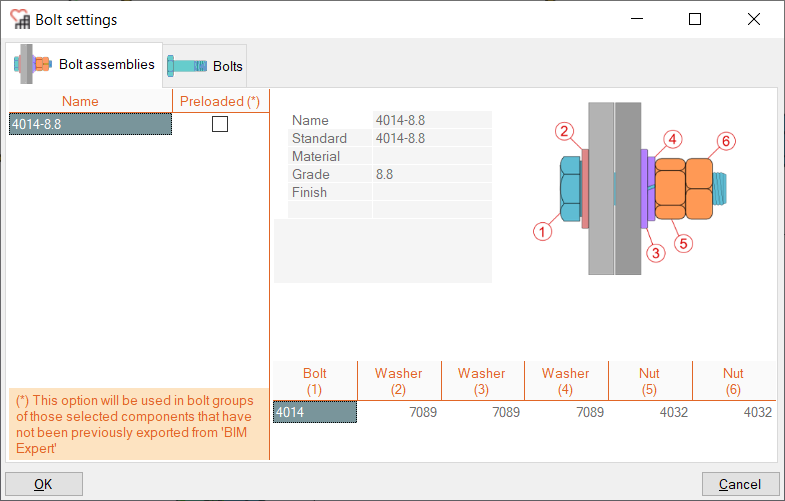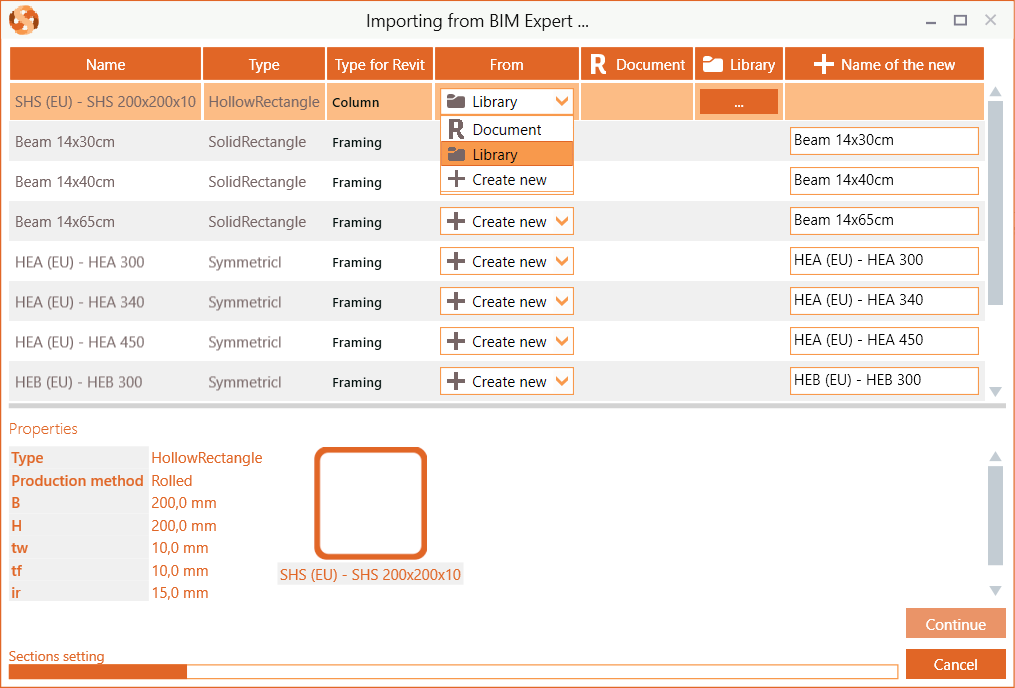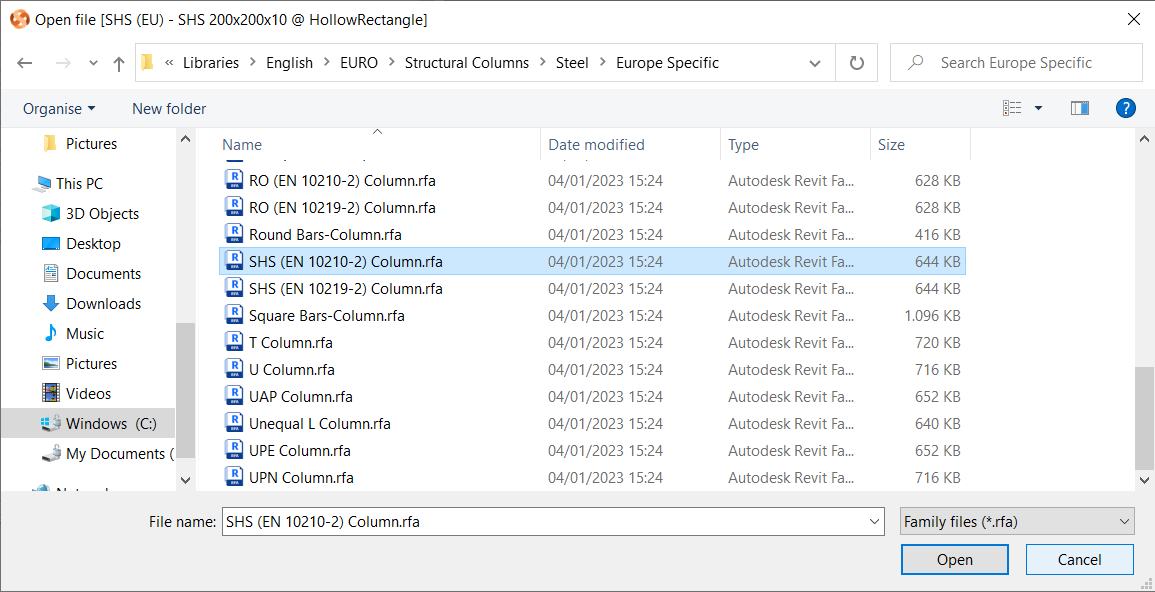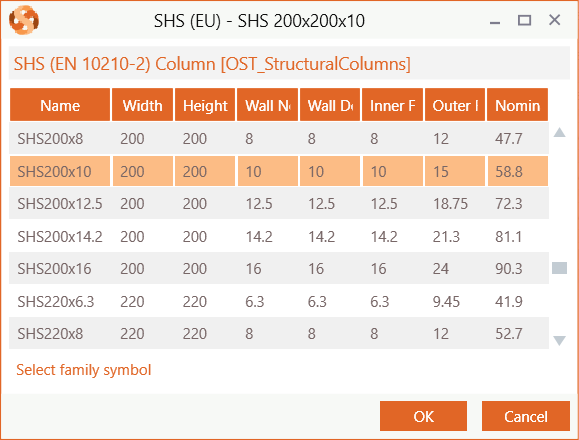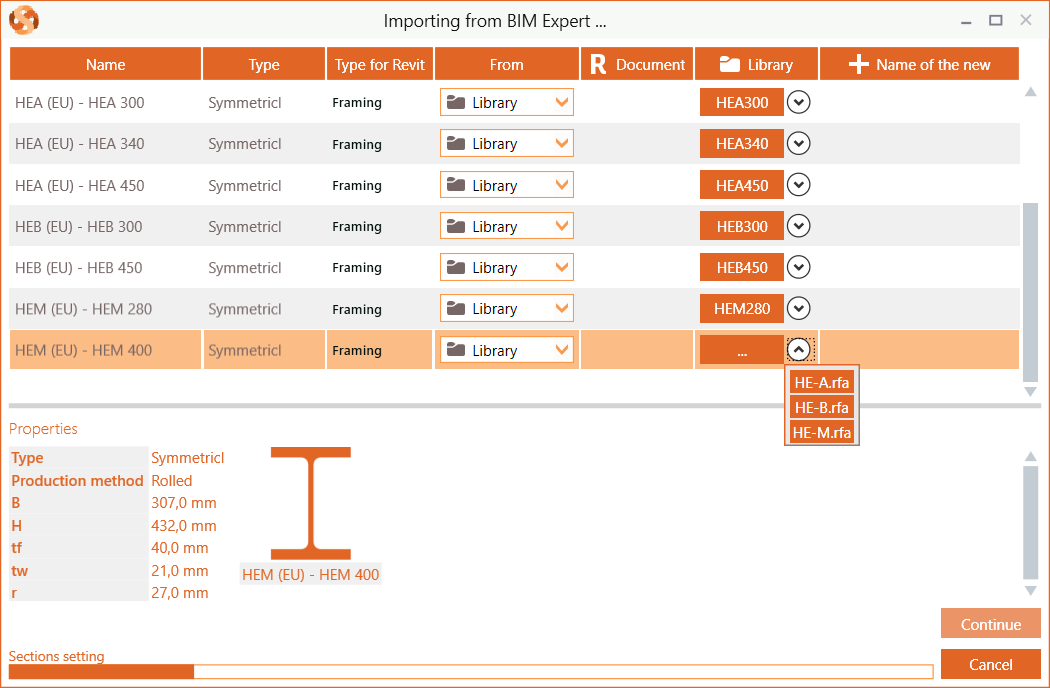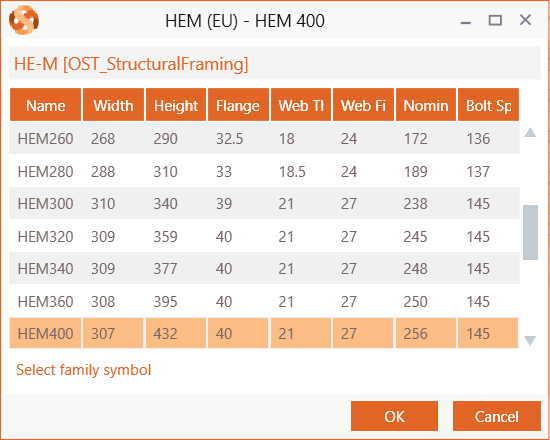This article explains how to send a Tekla Structures model to Revit, using BIM Expert.
1. Preparation in Tekla Structures
The transfer is based on the analytical model. So in Tekla Structures you need to create an analytical model first. The quality and coherence (connection between elements) of the analytical model will determine the quality of the structural calculations. It is therefore essential to build a good analysis model in Tekla Structures.
Learn here how to make a good analysis model in Tekla Stuctures.
2. Send model from Tekla Structures to Revit
2.1 From Tekla Structures to BIM Expert
There is more than 1 way to send models from Tekla Structures to BIM Expert. You can either start from
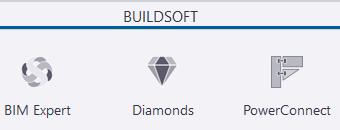
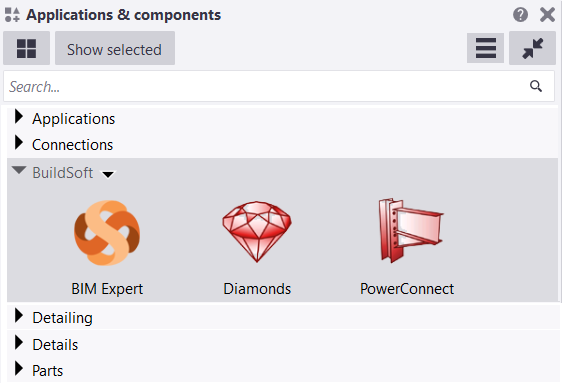
Click the BIM Expert icon to launch the transfer. Next you need to select what items to include, in addition to the Analysis model:
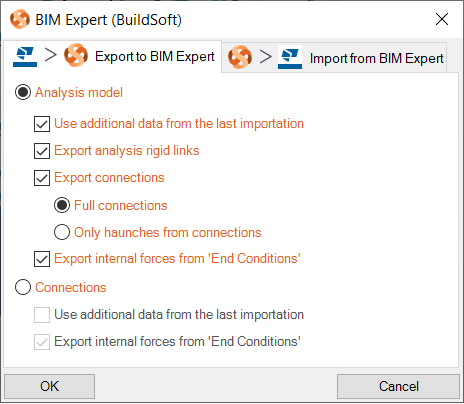
- Additional data: data that came from a previous transfer, but is not supported by Tekla Structures. This information is kept and can now be taken along in the current transfer (e.g. seismic information, soil layers, …)
- Rigid links
- Connection: full or only haunches
- Internal forces from ‘End Conditions’. The End Conditions tab can be found in the element’s UDA (User Defined Attributes):
No matter the way you have chosen, BIM Expert will now take over.
2.1.1 Settings
If you have more than one analytical model in Tekla Structures, you need to select the analysis model that you want to transfer

Next, the Tekla Structures sections and materials must be mapped with BIM Expert’s section and material database. BIM Expert will try to find as many automatic mapping matches as possible. In case all sections and materials find a match, you will not see any dialogs for mapping.
2.1.2 Material mapping
In case you have turned off the option to reduce dialog windows, you might see a material mapping dialog for mapping unknown materials. In the ‘reduce dialog window’ case, unknown materials will be added as new.
2.1.3 Section mapping
In case you have turned off the option to reduce dialog windows, you might see a section mapping dialog for mapping unknown sections. In the ‘reduce dialog window’ case, unknown sections will be added as new.
2.1.4 Connections and component bundles
In case you have chosen to export connections and there are connections in the model, BIM Expert will now start the connection conversion.
If you have turned off the option to reduce the dialog windows, you will get an overview of all connections components in the model and the possibility to bundle components.
The model is now in BIM Expert.
2.2 From BIM Expert to Revit
As the export is directly to Revit, make sure that you a empty Revit file open.
In the Model tab, select ‘Export’. Next, choose the destination software, namely Autodesk Revit. Click ![]() to continue.
to continue.
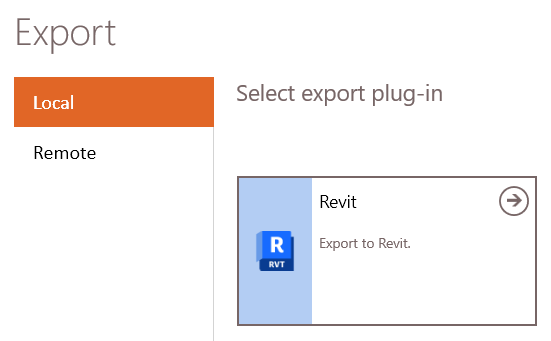
2.2.1 Settings
In case there is more than 1 Revit file open, you should choose the correct one by clicking ![]()
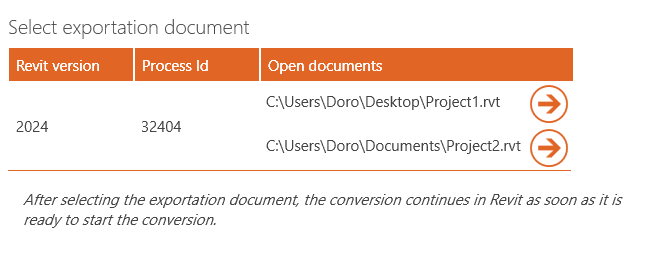
The import will now continue in Revit.
2.2.2 Material mapping
In case not all materials can be automatically mapped with the Revit document materials, you will see a dialog window to map BIM Expert’s materials with Revit’s document materials.
It is good practice to map all incoming BIM Expert materials with Revit document materials. Choose ‘R Document’ and then search for a match in the pull down list. Note that the material should already exist in the Revit material library.
If you cannot find a suited match, you can choose ‘Create New’.
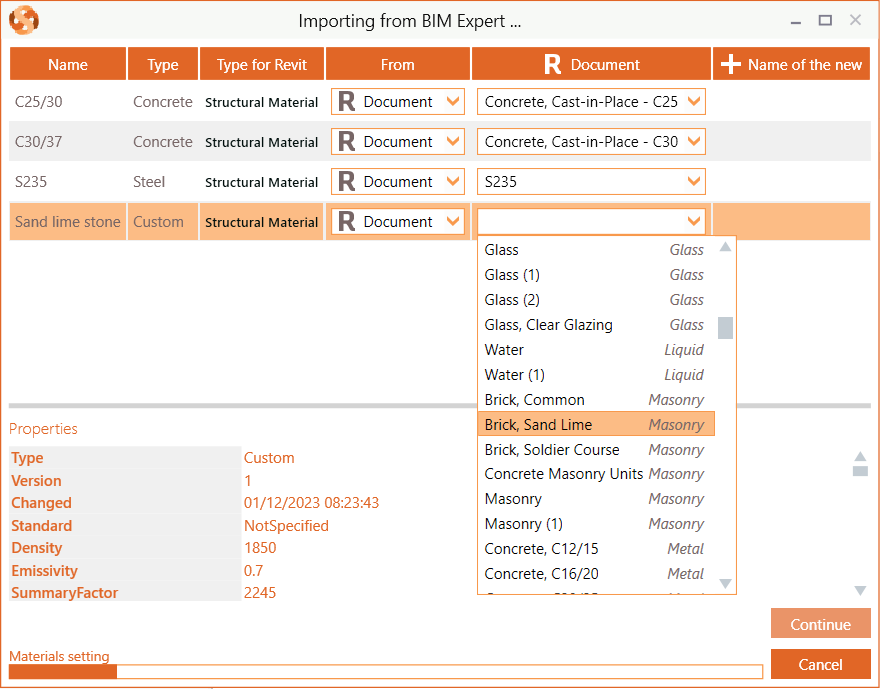
2.2.2 Section mapping
2.2.2.1 Bar sections
In case not all sections can be automatically mapped with the Revit document sections, you will see a dialog window to map BIM Expert’s sections with Revit’s document sections.
It is good practice to map all incoming BIM Expert sections with Revit document sections. Choose ‘R Document’ and then search for a match in the pull down list. If no suited match can be found, you can choose ‘Create New’ of select it from a ‘Library’.
For I, H, RHS, CHS, L, C. U, rectangular and circular cross-section, BIM Expert will create a new family symbol (cross-section) for you. There is no need to open a Revit library. If the ‘Continue’ button (right bottom corner) is enabled, all sections can be converted and you simply can move forward without any mapping.
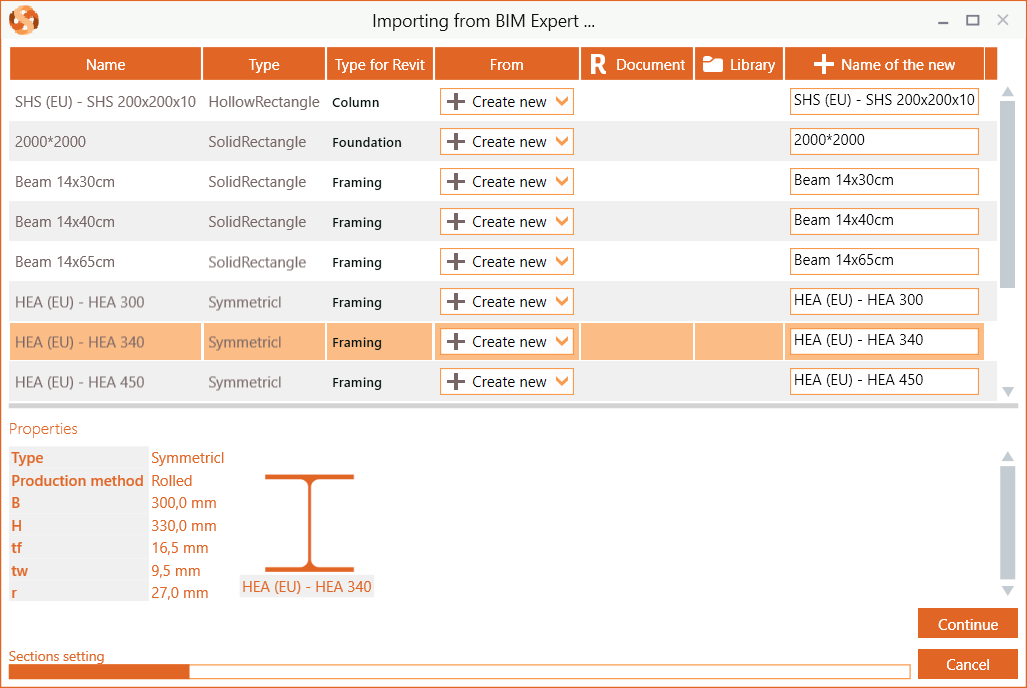
When to choose & open ‘Library’?
- you are using “non-typical” shapes
- you have created your own family of cross-sections (symbols) to match
- you really want to match with existing Revit libraries
2.2.2.2 Plate sections
In case not all plate sections can be automatically mapped with the Revit document plate sections, you will see a dialog window to map BIM Expert’s sections with Revit’s document plate sections.
Choose ‘R Document’ and then search for a match in the pull down list. If you cannot find a suited match, you can choose ‘Create New’. It is not uncommon to add all plate sections as new.
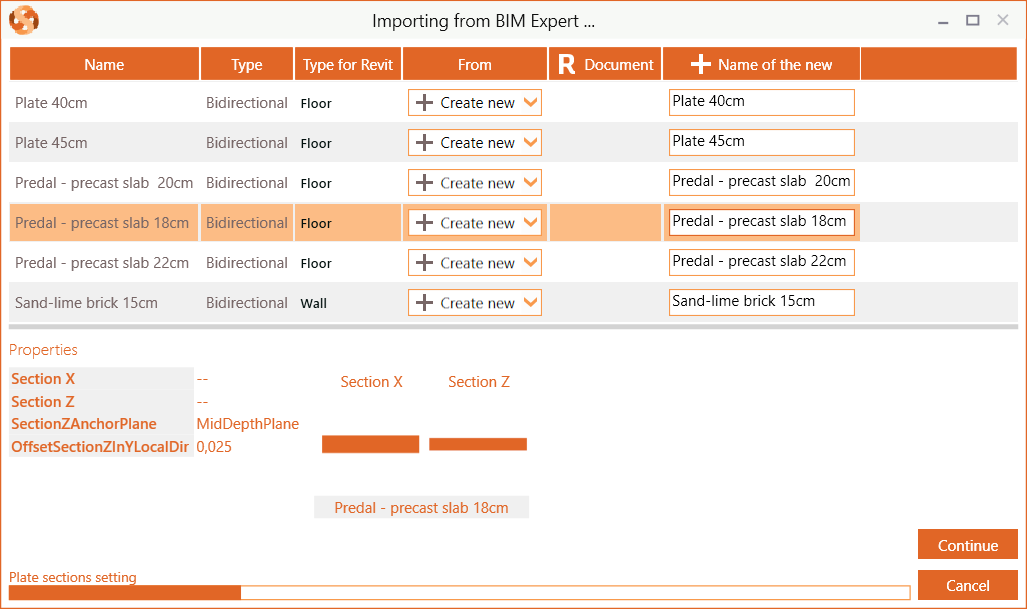
Note: The slab type ‘Breedplaat/Predal’ is converted to a precast slab in Revit. However, the original plate configuration is saved. When converting to other software supporting this type of slabs (ex. Diamonds), the plate will be recognized as ‘Breedplaat/Predal’.
2.2.4 Connections and components
Connections are currently not being transferred.
3. Final steps in Revit
The model is now in Revit, ready for the next steps.


